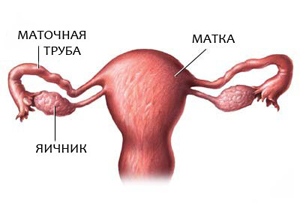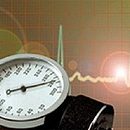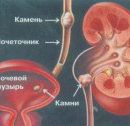Carcinoid develops so slowly that often from the start of the disease before its diagnosis. Helps to recognize the disease knowledge of his signs. What is a carcinoid syndrome? The answer is the author of this article.
Content
The carcinoid tumor is a tumor that develops from the so-called enterochromaffine cells. Enterochromaffine cells - these are cells that produce hormones, are usually in the small intestine, appendicks, colon, rectum, bronchops, pancreas, ovaries, testicles, liver, as well as in other organs.
Enterochromaffine cells produce a large number of hormones, such as histamine, serotonin and other substances that have a strong impact on the cardiovascular system (heart and blood vessels), gastrointestinal tract, lungs. For example, serotonin can cause diarrhea, and histamine - wheezing.
Since carcinoid tumors develop from enterochromaffine cells, they often retain the ability to produce the same hormones, often in large quantities. When these hormones circulate in the blood, they can cause the symptoms of carcinoid syndrome, which will be said below.
An important characteristic of the carcinoid tumor, which distinguishes them from the tumors of the gastrointestinal tract, is that they contribute to the emergence of carbonic syndrome. Most of the other tumors of the gastrointestinal tract (such as colon cancer or thin intestine lymphoma) due to their local exposure to the intestines contribute to the appearance of symptoms, such as abdominal pain, gastric bleeding and intestinal obstruction.
Despite the fact that carcinoid tumors can also cause the appearance of these local symptoms, they can also produce and allocate hormones that contribute to the emergence of carcinoid syndrome. Often symptoms of carcinoid syndrome can be more destructive than local symptoms.
What is hiding behind the words «carcinoid syndrome»
 Carcinoid syndrome - a combination of symptoms that arose due to the release of hormone tumors and their hit in the bloodstream. Symptoms of carcinoid syndrome vary depending on which hormones have allocated tumors.
Carcinoid syndrome - a combination of symptoms that arose due to the release of hormone tumors and their hit in the bloodstream. Symptoms of carcinoid syndrome vary depending on which hormones have allocated tumors.
Typical symptoms are:
- Hyperemia
- Diarrhea
- Abdominal pain
- Wars because of bronchospasm (narrowing the respiratory tract)
- Valve disease heart
- Operational intervention can provoke a complication known as carcinoid crisis.
Hyperemia is the most common symptom of carcinoid syndrome. 90% of patients hyperemia occurs during the disease. Hyperemia is characterized by redness or change in the color of the face and neck (or upper parts of the body), as well as increasing the temperature. Hyperemia attacks usually arise suddenly, spontaneously, they can also be caused by emotional stress, physical stress or alcohol adoption.
Hyperemia attacks can continue from minutes to several hours. Hyperemia may be accompanied by rapid heartbeat, low arterial pressure or dizziness attacks, if blood pressure drops greatly and blood does not enter the brain. Rarely hyperemia is accompanied by high arterial pressure. Hormones that are responsible for hyperemia, not fully recognized.
Diarrhea - the second important symptom of carcinoid syndrome. Approximately 75% of patients with carcinoid syndrome there is diarrhea. Diarrhea often arises along with hyperemia, but may also arise without it. With carcinoid syndrome, diarrhea most often arises due to serotonin.
Cardiac diseases occur in 50% of patients with carcinoid syndrome. Carcinoid syndrome usually leads to scarring and tug exciting of the pulp of the right side of the heart. The batchiness of these two valves reduces the ability of the heart to pump blood from the right ventricle into light and in other parts of the body, which can lead to heart failure.
Typical symptoms of heart failure include an increase in the liver (due to the provision of blood blood during heart failure, when it is not able to pump all the incoming blood), swelling of the legs and the ankles (watercoltenka), the edema of the abdominal cavity due to the accumulation of the liquid (abdominal water). The cause of the lesion of the three-risk and pulmonary heart valves in the carcinoid syndrome, in most cases, is the intense prolonged impact of serotonin on blood.
Carcinoid attack is a dangerous state that may occur during surgery. It is characterized by a sudden drop in pressure, which causes the occurrence of shock, sometimes accompanied by an excessively rapid heartbeat, an increased blood glucose content, as well as the strongest bronchospasm.
Carcinoid attack can lead to death. The best way to prevent carcinoid attack is surgical intervention.
Warms appear about 10% of patients with carcinoid syndrome. Wars - a consequence of bronchospasm (spasp of respiratory tract), which arises as a result of the extraction of hormones by carcinoid tumor.
Abdominal pain is a common symptom in patients with carcinoid syndrome. Pain may occur due to metastases in the liver, due to the fact that the tumor affects the neighboring fabrics and organs, or intestinal obstruction.









